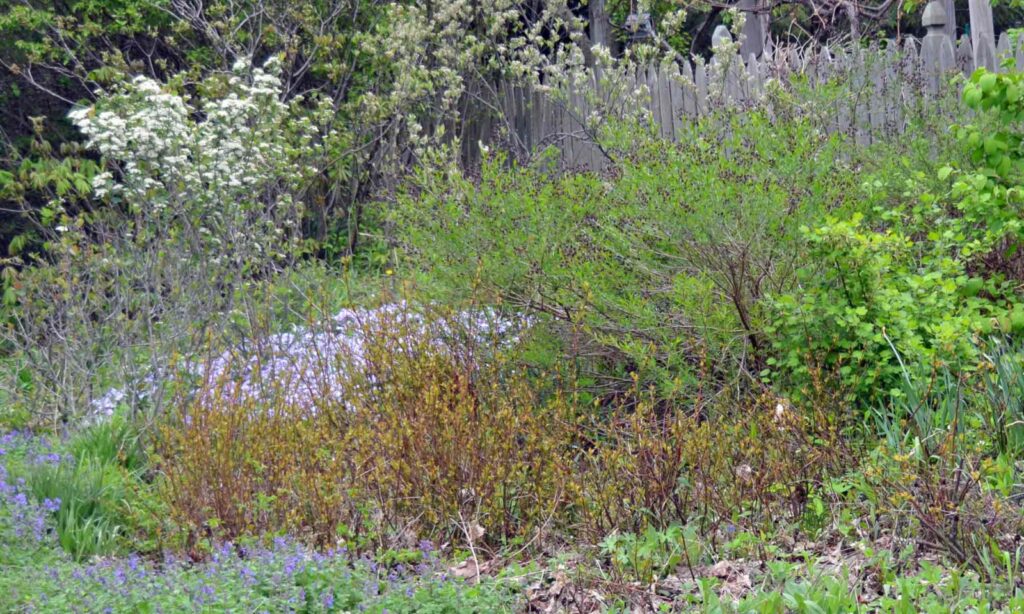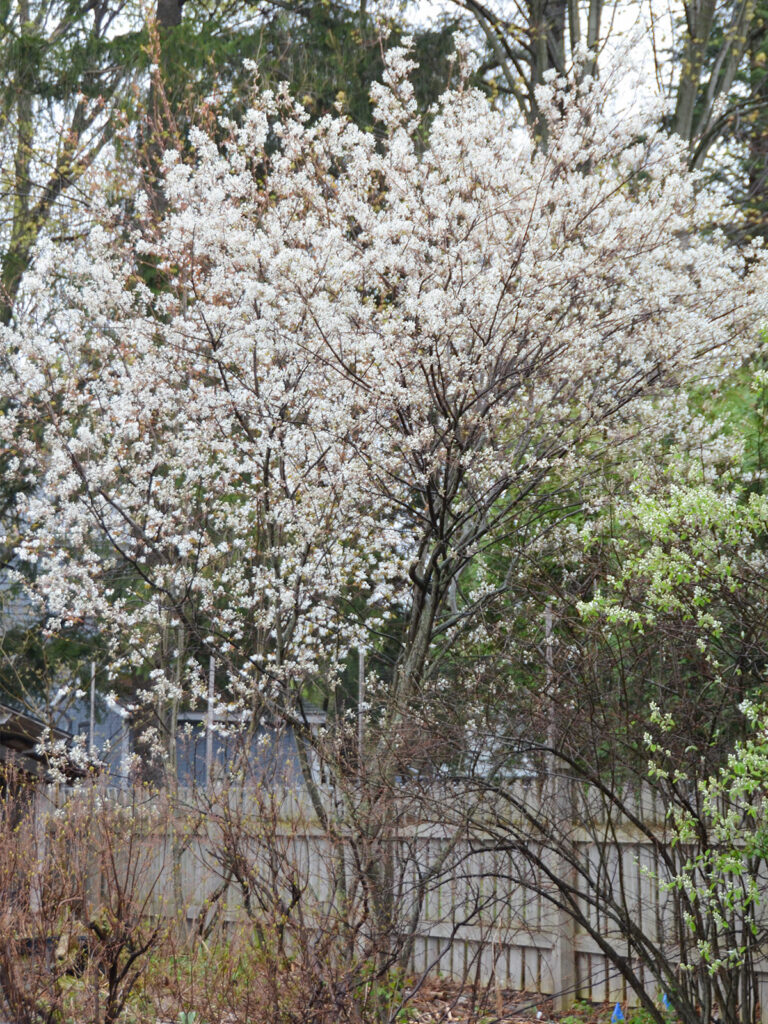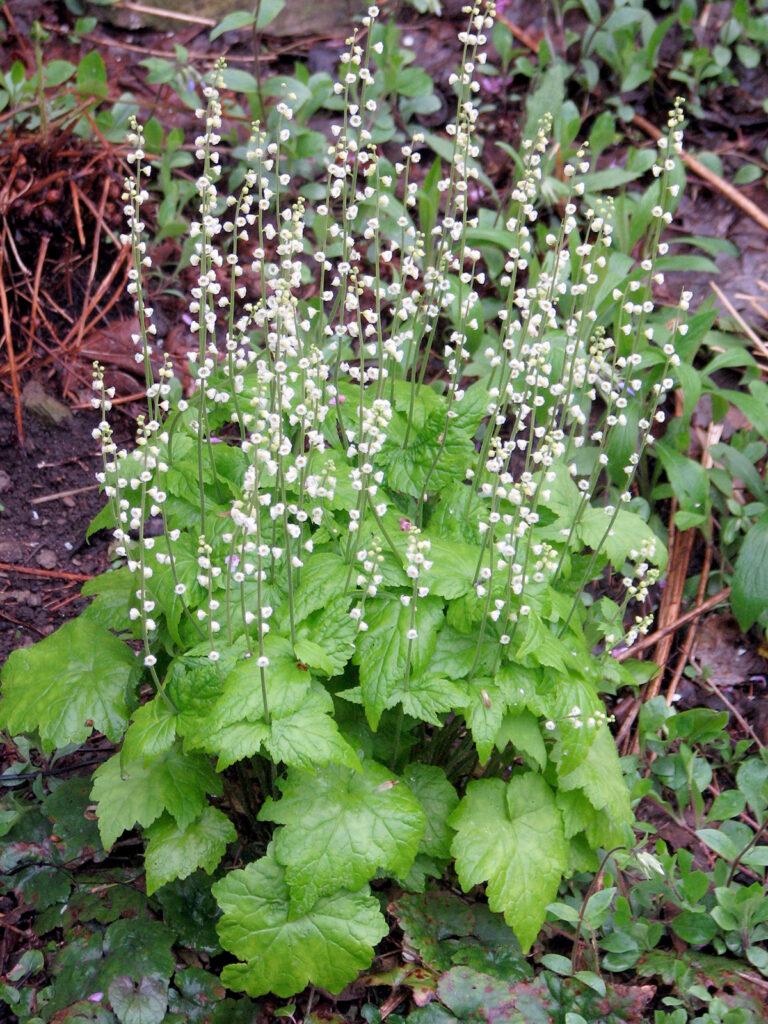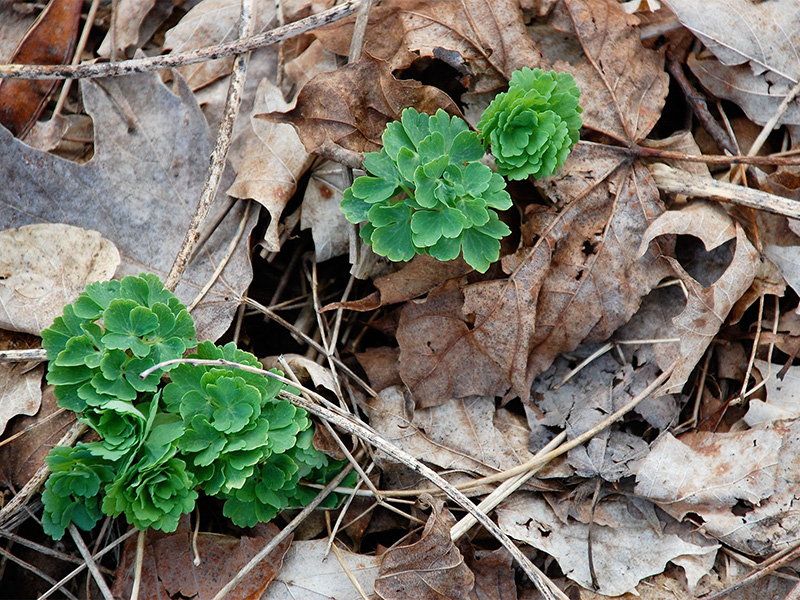
Here in Central New York, spring can be a long time coming. The last frost date is May 10, and we’ve been known to have snow storms even as late as Mother’s Day!

Flowering trees and shrubs are a delight in spring. Serviceberry (Amelanchier canadensis) is one of the earliest and whitest (pictured).
We have five varieties of serviceberry, and they all bloom at slightly different times. It’s nice to have this overlapping bloom since it extends the season of bloom and thus also of the berries.
We also have a variety of dogwoods, chokeberries, and other shrubs and understory trees that bloom in spring.

Bloodroot (Sanguinaria canadensis) is one of the earliest and the most fleeting of all spring flowers.
We have some nice patches of bloodroot. For a while, I had both the double-flowered cultivar and the single-flowered species.

Even though gardens feature more and more McMansion-esque double flowers (some approaching monstrosities), I’m fonder of the single ones for their elegance and simplicity — and especially because bees can actually get to the nectar. As I’ve moved additional bloodroots around our yard, I’ve moved only the single-petaled type and have been composting the double-flowered variety.

Some of the plants we look forward to besides bloodroot are columbine (Aquilegia canadensis), trillium (Trillium grandiflorum), Jack-in-the-pulpit (Arisaema triphyllum), false solomon’s seal (Smilacina stellata), miterwort (Mitella diphylla), foam flower (Tiarella cordifolia), bluebells (Mertensia virginica), merry bells (Uvularia grandiflora), and others.
Of course, we have only a few plants of some of these species, such as miterwort, but it’s all the more reason for getting out there on my hands and knees to appreciate the ones we have.

In mid-May our backyard meadow is just waking up.
Note the leaf litter. We aren’t neatniks. We leave most of the old flower stalks, leaves, and so forth throughout the winter. In spring, we break off most of the old stalks (usually easily done by hand) and put them in the compost. Some of it, though, just stays in the garden — a fact that birds like robins appreciate since these little bits of nature are important nest materials. As the foliage grows, all this litter is hidden as it slowly decomposes, enriching the soil year by year.

I’ve also been experimenting with how much leaf litter I can leave in the spring and still have columbines and other perennials spring up through them. They do pretty well, though I usually remove some of the leaves since it’s a pretty thick leaf cover (and I get impatient to see what’s growing). In addition to the leaves falling from the Kentucky coffee tree (Gymnocladus dioicus) above them, we also rake up the leaves from our mini-lawn and put them in this area, so the leaf cover may be somewhat thicker than it might be in a real forest.

The habitat hedgerow in spring.
Resources
- Ecological Landscaping Association:
- The Lives of Spring Wildflowers – an interesting discussion of spring ephemerals and the role of pollinators
- New York Times:
Reflections
Over increasingly large areas of the United States, spring now comes unheralded by the return of the birds, and the early mornings are strangely silent where once they were filled with the beauty of bird song.
~ Rachel Carson, Silent Spring
Now in spring gardeners are irresistibly drawn to their gardens; as soon as they lay the spoon down, they are on the beds, presenting their rumps to the splendid azure sky; here they crumble a warm clod between their fingers, there they push nearer the roots a weathered and precious piece of last year’s dung, there they pull out a weed, and here they pick up a little stone; now they work up the soil round the strawberries, and in a moment they bend to some young lettuce, nose close to the earth, fondly tickling a fragile tuft of roots. In this position they enjoy spring, while over their behinds the sun describes his glorious circuit, the clouds swim, and the birds of heaven mate. Already the cherry buds are opening, young foliage is expanding with sweet tenderness, blackbirds sing like mad; then the gardener straightens himself, eases his back, and says thoughtfully: “In autumn I shall manure it thoroughly, and I shall add some sand.”
~ Karel Capek, The Gardener’s Year, 1929; Note: Capek, author and creator of the term “robot,” was a Czech patriot, dying of pneumonia after a hunger strike protesting Hitler’s attack on Czechoslovakia.
Every year, back comes Spring, with nasty little birds yapping their fool heads off and the ground all mucked up with plants.
~ Dorothy Parker, author, 1893-1967; Note: Parker was well-known for being witty, but obviously a habitat gardener she was NOT!
